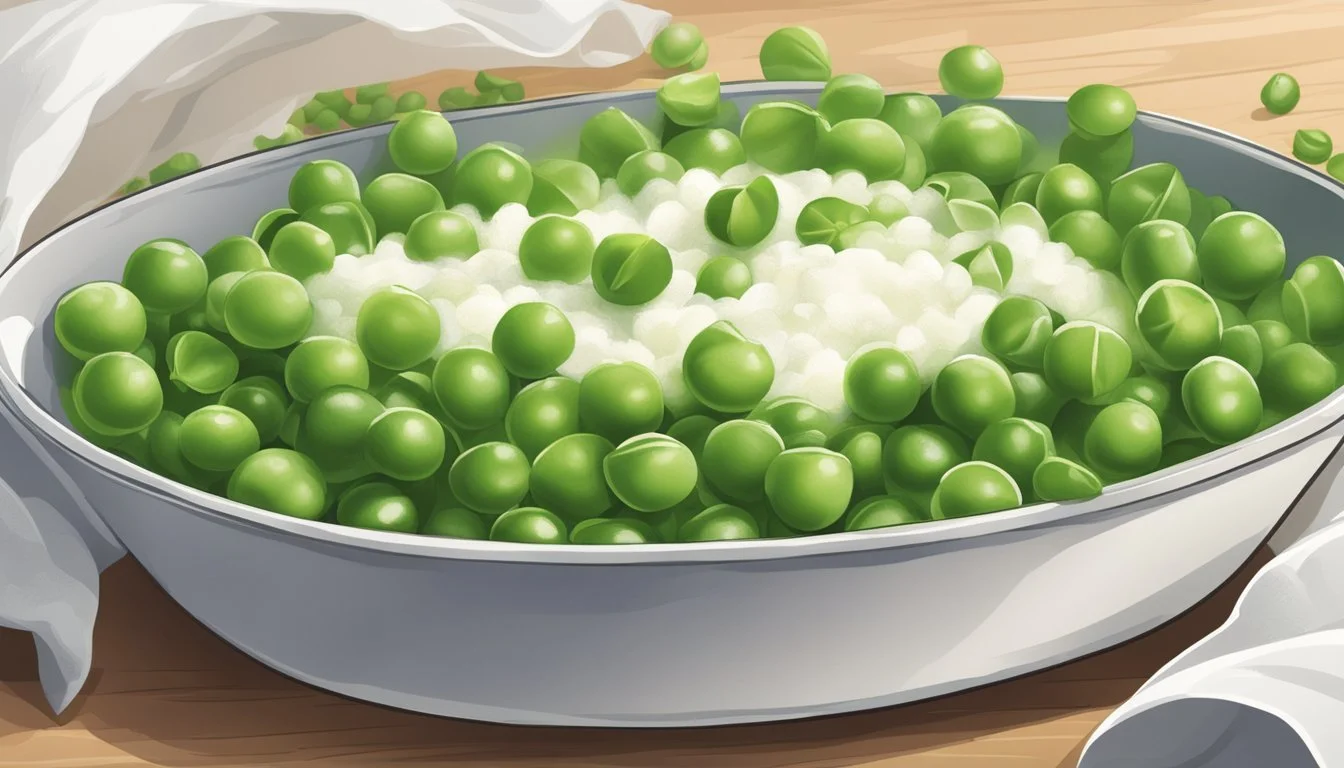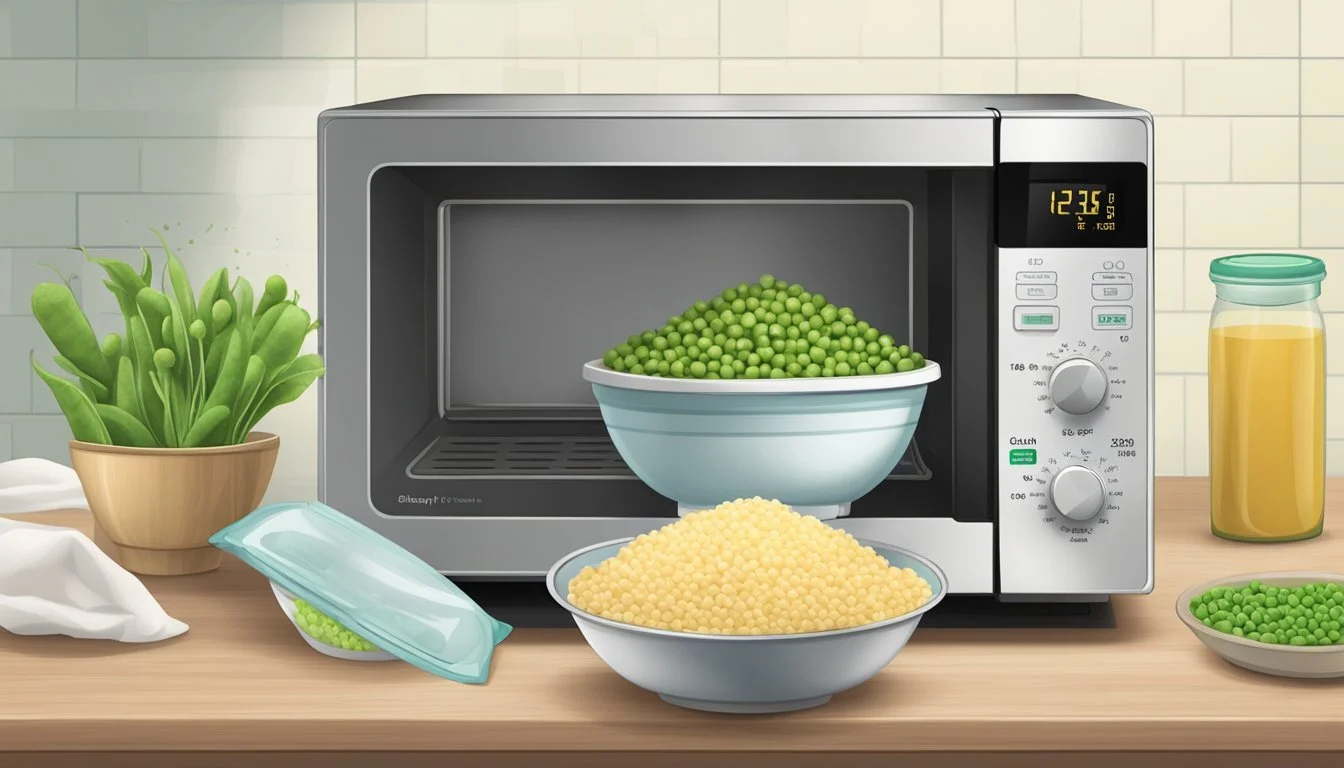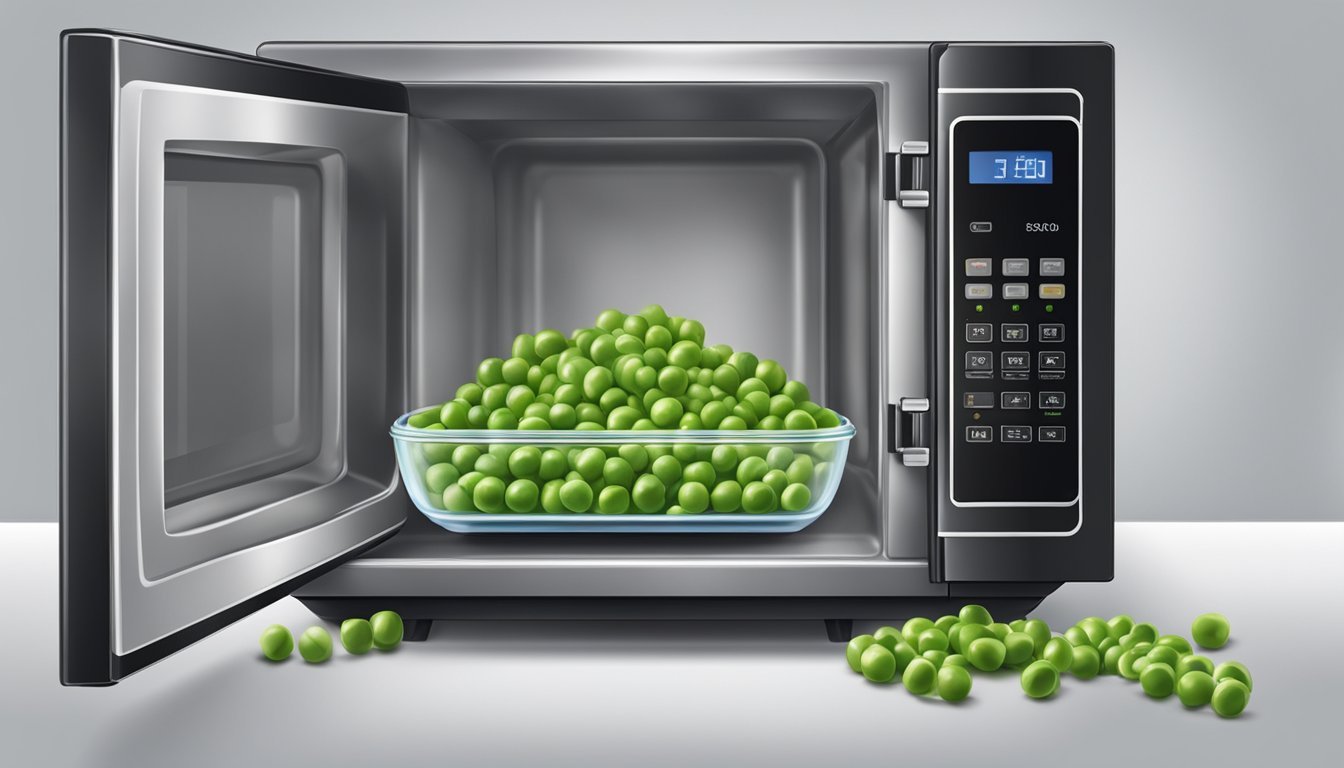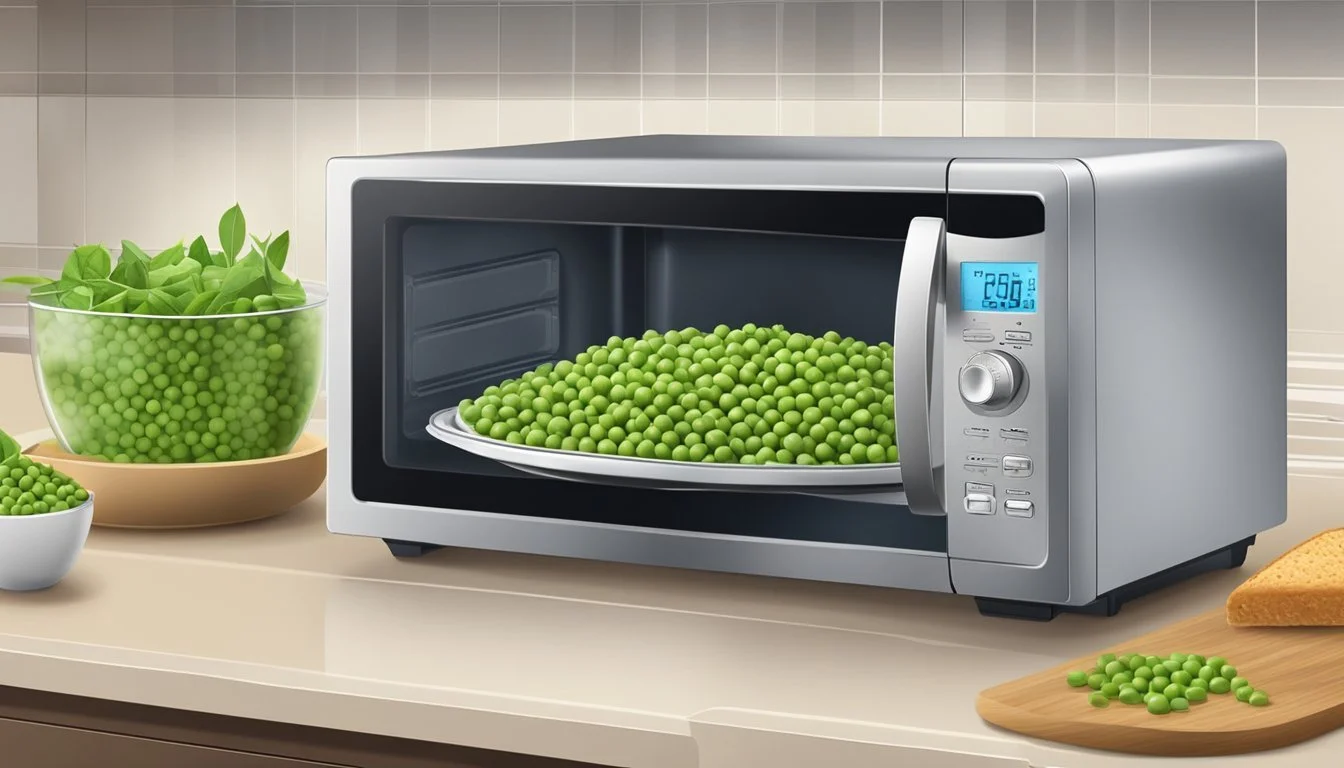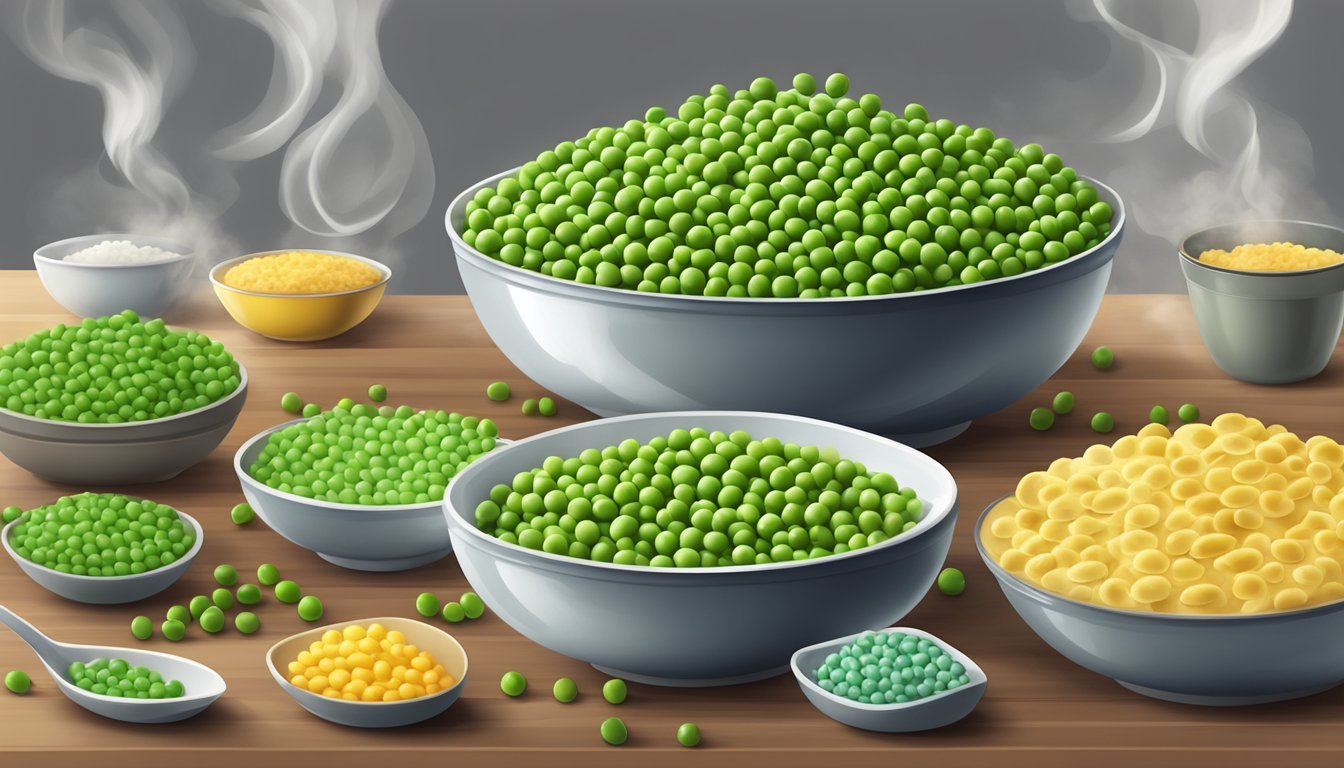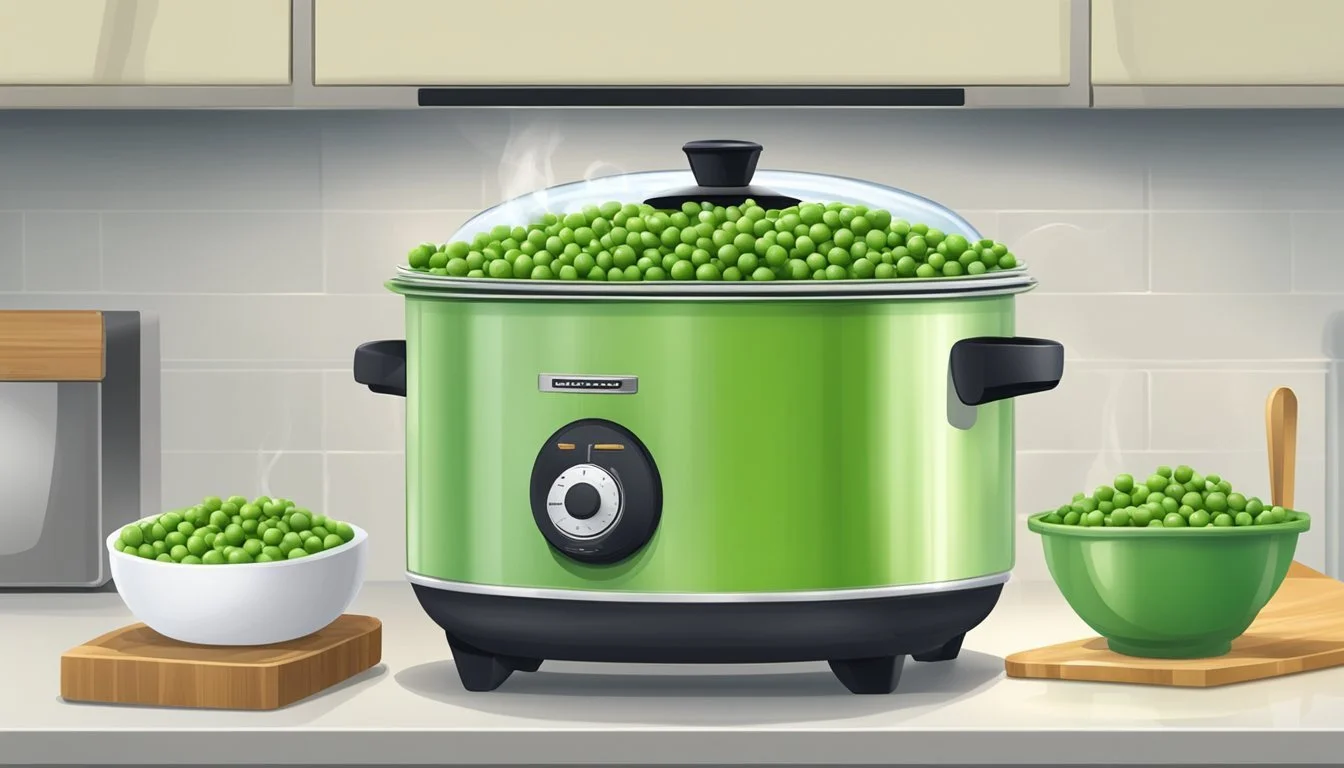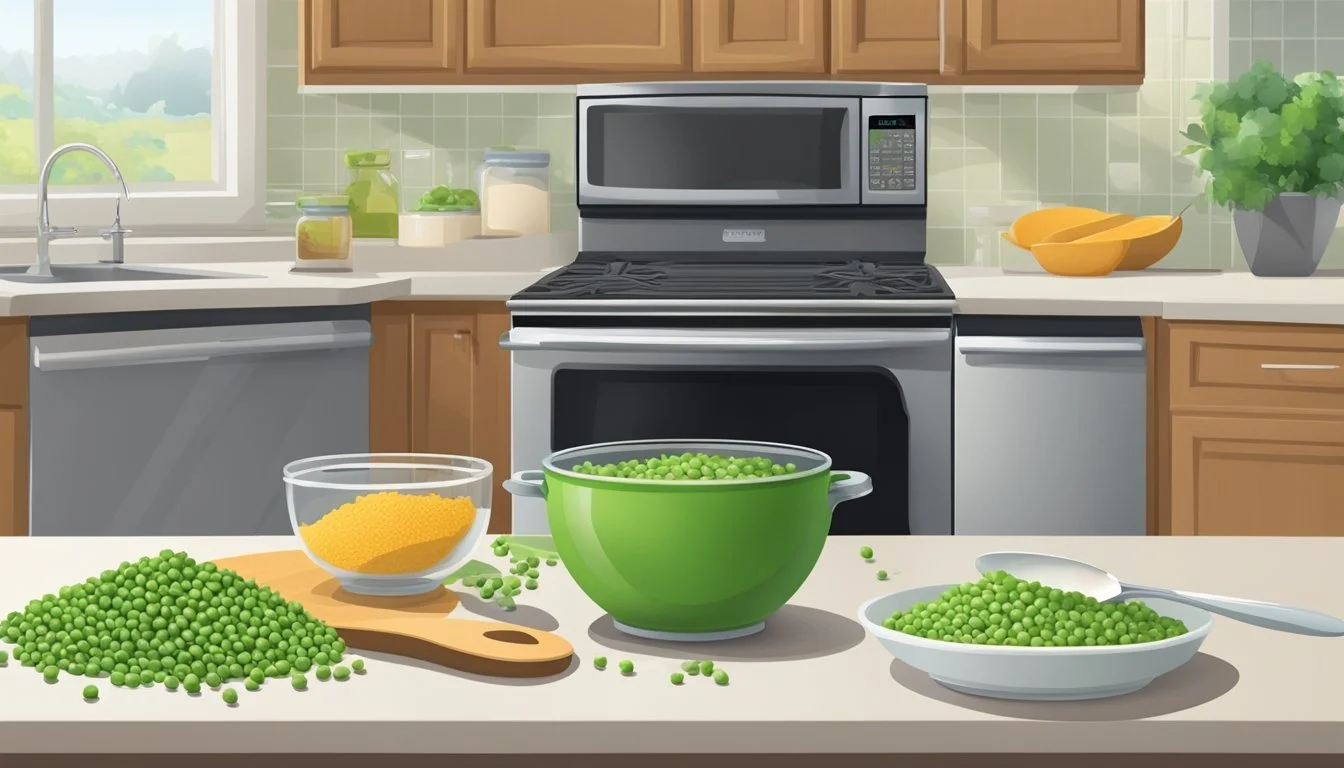How to Reheat Gluten-Free Peas
Simple and Effective Methods
Reheating gluten-free peas doesn't have to be a challenge. Whether you're working with a batch of pea puree, mint fritters, or simply plain peas, the key lies in preserving their taste and texture through gentle reheating methods. With the right techniques, your gluten-free peas can regain their flavor and remain delicious.
One effective way to reheat plain peas is a quick steam on the stovetop. This method ensures they don't become mushy and retain their bright green color. For dishes like pea puree or pasta with peas, reheating gently in a pan on the stovetop while stirring frequently can help maintain their creamy consistency.
For more complex dishes such as pea and mint fritters, the oven is an excellent option. Place the fritters on a baking tray and warm them at a moderate temperature until heated through. By following these methods, your gluten-free peas will always taste fresh and satisfying.
Understanding Gluten-Free Options
Preparing gluten-free meals requires attention to the ingredients and cross-contamination risks. Ensuring peas and other items are truly gluten-free involves careful selection of products and understanding label information.
The Basics of Gluten-Free Cooking
Gluten-free cooking involves using ingredients that do not contain wheat, barley, or rye. It is important to avoid cross-contamination by using separate utensils and cooking surfaces. Recipes should include naturally gluten-free items such as vegetables, fruits, and proteins.
Cooking processes should be adapted for gluten intolerance by replacing gluten-containing items with safe alternatives, such as using gluten-free broth when heating peas. Whether working with fresh or frozen peas, cooking methods should be verified for gluten-free safety.
Recognizing Gluten-Free Peas and Ingredients
Fresh peas are naturally gluten-free but be cautious of pre-packaged options which could contain gluten additives. Always check for a gluten-free label. Frozen peas are generally safe, but verifying the package can prevent accidental gluten intake.
Ingredients added to peas, such as spices, sauces, or oil, must also be gluten-free. Reading labels thoroughly helps identify hidden sources of gluten. For a gluten-free recipe, use certified products and avoid processed items that lack clear gluten-free markings.
By understanding these principles, you can confidently prepare safe, delicious gluten-free pea dishes.
Preparation of Peas for Reheating
Proper preparation is essential for ensuring that peas maintain their flavor and texture when reheated. This section covers important tips on selecting, washing, freezing, and storing peas.
Selection and Washing of Fresh Peas
When selecting fresh peas, look for pods that are bright green and firm. Avoid any that are yellowing or feel overly soft. Fresh peas should snap easily when broken and have a sweet aroma.
Once selected, rinse the peas thoroughly under cold water to remove any dirt or residue. For added safety, consider using a vegetable wash. After washing, pat the peas dry with a clean towel. If using frozen peas, no washing is necessary prior to reheating since they are typically cleaned before packaging.
Freezing and Storage Tips
For those who wish to store fresh peas, freezing is an effective method. Blanch the peas by boiling them for 2-3 minutes, then immediately transfer them to ice water to halt the cooking process. This helps preserve their color and texture.
After blanching, drain the peas and spread them out on a baking sheet to freeze individually. Once frozen, transfer the peas to airtight freezer bags or containers. Label the bags with the date and store them in the freezer.
Storage Tips:
Fridge: Store fresh peas in a perforated plastic bag to maintain airflow and keep them fresh.
Freezer: Use airtight bags to prevent freezer burn and maintain quality.
Proper storage ensures that peas retain their taste and nutritional value when reheated as a delicious side dish.
Reheating Techniques
To reheat gluten-free peas effectively, consider the stove-top, microwave, or oven methods. Each method offers specific steps to ensure that the peas are warmed through without losing their texture or flavor.
Stove-Top Reheating Method
For stove-top reheating, a pot or saucepan proves most effective. Start by adding just enough water or broth to cover the bottom of the pot. Heat the liquid over medium heat until it begins to simmer.
Then, add the peas. Stir occasionally to ensure even heating and to avoid sticking. If the peas are frozen, there's no need to defrost them prior to reheating. The steam from the simmering liquid helps to reheat the peas gently. Usually, this process takes about 5-7 minutes. Once warmed through, serve immediately.
Microwave Reheating Method
Microwaving offers a quick and convenient way to reheat gluten-free peas. Place the peas in a microwave-safe dish. Add a tablespoon of water to create steam, which helps to keep the peas from drying out.
Cover the dish with a microwave-safe lid or microwave-safe plastic wrap, leaving a small gap for steam to escape. Heat on high for 1-2 minutes. Stir halfway through to ensure even heating. If the peas are not warm enough, continue heating in 30-second intervals, checking and stirring each time until they reach the desired temperature.
Oven Reheating Method
Reheating peas in the oven is less common but still effective when a gentle, even heat is desired. Preheat the oven to 350°F (175°C). Transfer the peas to an oven-safe dish and add a small amount of water or broth to maintain moisture.
Cover the dish with aluminum foil to trap steam. Place in the oven and heat for about 15 minutes. Check and stir halfway through to ensure even heating. The peas are ready when they are heated through and tender. Remove from the oven and serve immediately. This method is ideal for larger quantities of peas.
Enhancing Flavor and Texture
Reheating gluten-free peas provides the perfect opportunity to enhance their flavor and texture. Key methods include incorporating fats and seasonings, crafting complementary sauces, and perfecting the final touches.
Incorporating Fats and Seasonings
Adding fats like butter, olive oil, or vegan butter elevates the taste and richness of peas. Start by reheating peas in a pan with a tablespoon of your chosen fat. This adds a smooth, creamy texture.
Season with salt and pepper to taste. For a burst of flavor, consider adding minced garlic or a sprinkle of your favorite herbs such as parsley or thyme. These enhancements make the peas more aromatic and flavorful.
Crafting Complementary Sauces
Sauces can transform reheated peas into a gourmet side dish. A simple cream sauce can be made by melting butter and adding cream or milk. Stir until the sauce thickens, then mix with the peas.
For a dairy-free version, use dairy-free milk and vegan butter. Garlic or herbs like dill can be added for an extra kick. This approach boosts both the flavor profile and mouthfeel of the peas.
Perfecting the Final Touches
Finishing touches are crucial for the best texture and presentation. Carefully drain any excess liquid before serving to avoid sogginess. For added richness, sprinkle grated cheese or a dairy-free alternative on top of the hot peas.
A touch of lemon zest or a light drizzle of olive oil can enhance their brightness and fresh taste. These simple final steps ensure that the reheated peas are not just warm, but also perfectly delicious and well textured.
Alternative Gluten-Free Pea Dishes
There are numerous creative and delicious ways to incorporate gluten-free peas into your diet. From side dishes to main courses, peas can bring nutritional benefits like fiber and protein to various meals. Here are a few ideas to consider.
Creating Gluten-Free Pea Side Dishes
Peas can be a versatile addition to many side dishes. Green Pea Fritters are a great option; they can be baked or fried and are naturally gluten-free. Combine peas with ingredients like gluten-free flour, eggs, and herbs such as mint and parsley to create a tasty fritter.
Another option is a Green Pea Salad. Mix peas with other vegetables like carrots, bell peppers, and corn. Dress with a light vinaigrette for a refreshing side dish that pairs well with many main courses. Adding a bit of feta or goat cheese can enhance the flavor and provide extra protein.
Main Dishes with Peas as a Protein Source
Peas can also shine in main dishes. Green Pea Pasta is a satisfying and easy meal. Use gluten-free pasta and mix in a green pea sauce made from boiled peas, garlic, olive oil, and a bit of lemon zest. To make it heartier, add some cooked chicken or shrimp.
Pea and Tofu Stir-fry is another main dish option. Sauté peas with tofu, gluten-free soy sauce, ginger, and vegetables like broccoli and bell peppers. This dish is both vegan and vegetarian, offering protein and a good dose of fiber.
Innovative Gluten-Free Pea Snacks
Creating snacks with peas can be both fun and healthy. Seasoned Pea Crisps are a crunchy alternative to traditional chips. Bake peas with a bit of olive oil, salt, and your favorite spices until crispy.
Pea Hummus is another snack idea. Blend cooked peas with tahini, lemon juice, garlic, and olive oil. Serve with gluten-free crackers or vegetable sticks for a nutritious snack. Both options provide a good amount of fiber and are perfect for a quick bite during the day.
Serving and Pairing Suggestions
Peas offer a versatile base that pairs excellently with a variety of other foods and can be incorporated into numerous international dishes. The following tips focus on maximizing the delicious potential of gluten-free peas.
Complementing Peas with Other Foods
Garden peas pair beautifully with vegetables like broccoli and cauliflower. Their sweet flavor contrasts well with the earthy notes of these cruciferous veggies.
For a heartier meal, consider combining peas with mushrooms or sweet potato. The umami of mushrooms adds depth, while sweet potatoes provide a delightful sweetness.
To balance the nutrition, peas can be served alongside lean proteins such as chicken or fish.
Peas also work well in salads, adding a pop of color and a burst of flavor. Simply sprinkle boiled garden peas over a bed of mixed greens.
Peas in International Cuisines
Peas feature prominently in Indian cuisine, often found in dishes like matar paneer where they are cooked with a spiced tomato sauce and paneer cheese.
In Italian cooking, peas are frequently added to risottos and pasta dishes, pairing wonderfully with ingredients like pancetta or basil.
British cuisine often includes peas in traditional dishes like fish and chips, where peas provide a fresh balance to fried fish.
Asian stir-fries also benefit from the addition of peas, which complement flavors like ginger, garlic, and soy sauce.
These pairings highlight the versatility of peas in various culinary traditions.
Tips for Cooking Gluten-Free for Kids
Cooking gluten-free meals for kids can be enjoyable and nutritious with a bit of planning and creativity. Ensuring the dishes are both appealing and easy to prepare is essential, especially for picky eaters.
Making Gluten-Free Peas Appealing to Picky Eaters
To make peas more appealing to kids, consider pairing them with fun and familiar flavors. Lightly sauté gluten-free peas with a bit of garlic and butter. This not only enhances the flavor but also keeps the peas tender.
Another idea is to mix peas into casseroles or pasta dishes, like gluten-free mac and cheese. These blends make peas less prominent while still including them in the meal.
You can also create colorful food presentations by combining peas with carrots or corn. These combinations help make meals visually attractive and more enticing for picky eaters.
Furthermore, using a bit of parmesan cheese on top of peas can add a savory taste that kids often enjoy, making them more likely to eat their veggies willingly.
Understanding Nutritional Information
Peas provide a wide range of nutrients that are essential for maintaining good health. Including these gluten-free legumes in your diet can offer numerous benefits.
Benefits of Including Peas in Your Diet
Peas are rich in fiber, which aids in digestion and helps maintain a healthy gut. They are also lower on the glycemic index, making them an excellent choice for those who need to monitor their blood sugar levels.
These legumes are packed with vital vitamins and minerals. Vitamins such as Vitamin K, Vitamin C, and several B vitamins can be found in peas. Minerals like iron, magnesium, potassium, and zinc are also present, supporting various bodily functions, including maintaining strong bones and boosting the immune system.
Peas contain plant-based protein, making them a great option for vegetarians and vegans. Additionally, they are naturally gluten-free, which is beneficial for people with celiac disease or gluten sensitivity.
Frequently Asked Questions
When reheating gluten-free peas, people often have various concerns ranging from retaining flavor to avoiding gluten contamination. Here are the answers to some of the most common questions on this topic.
Common Concerns About Reheating and Gluten-Free Diets
Are peas naturally gluten-free?
Yes, peas are naturally gluten-free. They do not contain gluten, which makes them a safe option for those with celiac disease or gluten intolerance. When reheating, ensure that the utensils and cookware used are not contaminated with gluten to maintain their gluten-free status.
What liquid should I use to reheat peas without losing flavor?
Using a small amount of water or broth is recommended. Broth adds flavor without introducing gluten. For a richer taste, gluten-free vegetable or chicken broth can be added.
Is it safe to reheat frozen peas directly without defrosting?
Yes, it is safe to reheat frozen peas directly without defrosting. Place them in a pan with a bit of water or broth and cook over medium heat until heated through, stirring occasionally to ensure even heating.
How can I prevent gluten contamination when reheating peas?
Use dedicated gluten-free utensils and cookware. Even trace amounts of gluten can cause problems for those with celiac disease. Always clean surfaces and equipment thoroughly before use.
What is the best method to reheat gluten-free creamed peas?
Reheat creamed peas gently over medium-low heat. Stir frequently to prevent clumping and ensure even heating. If the peas seem too thick, add a small amount of milk or broth to reach the desired consistency while keeping it gluten-free.
Can I microwave peas for reheating?
Yes, peas can be reheated in the microwave. Place them in a microwave-safe dish, add a splash of water, and cover. Heat on high for a few minutes, stirring halfway through to ensure even heating.
Community and Resources
Connecting with others and accessing well-curated resources can greatly enhance the experience of cooking and reheating gluten-free peas. Various online communities and cooking guides provide extensive support and information for anyone navigating gluten-free eating.
Connecting with Gluten-Free Communities Online
Facebook and Instagram have become invaluable platforms for gluten-free enthusiasts.
Groups and pages dedicated to gluten-free living allow members to share tips, recipes, and personal experiences. On Facebook, large groups like "Gluten-Free Recipes" or "Celiac and Gluten-Free Support" connect thousands of people.
Instagram serves as an inspirational hub where users post pictures and tutorials on gluten-free dishes. Following popular accounts can provide a steady stream of ideas and tips for reheating and cooking gluten-free peas.
Pinterest also offers a visual directory of gluten-free recipes and techniques. Searching for terms like "gluten-free peas" yields numerous results populated by bloggers and experts.
Gluten-Free Cooking Resources and Guides
A variety of guides and cookbooks focus on gluten-free cooking. Renowned authors and chefs have published comprehensive guides that include specific chapters on peas and other legumes.
Online resources such as dedicated gluten-free cooking websites provide step-by-step instructions, including reheating tips. These websites often offer downloadable PDF guides and email newsletters that keep you updated with the latest recipes.
YouTube channels dedicated to gluten-free cooking also serve as practical visual aids. Chefs demonstrate proper reheating techniques and share secrets to maintaining texture and flavor.
Email subscriptions to cooking newsletters can deliver curated content right to your inbox, ensuring you never miss out on new methods for reheating gluten-free peas.

